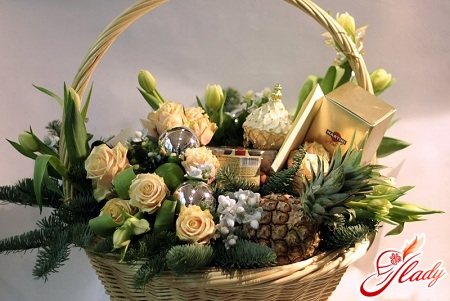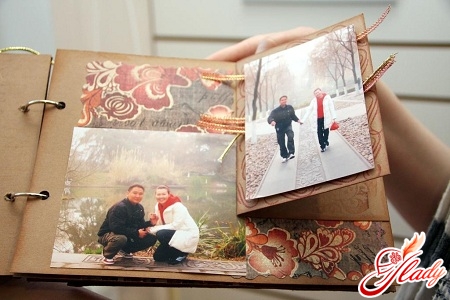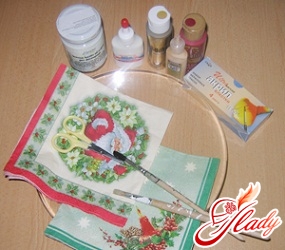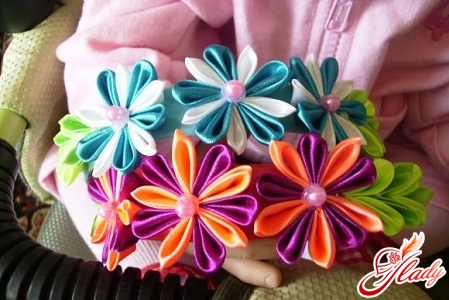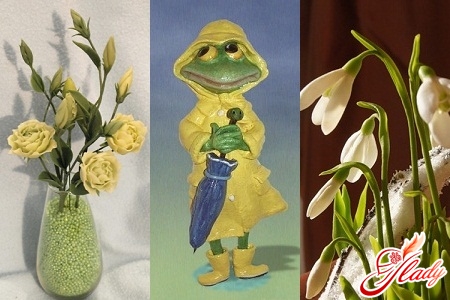 "Cold porcelain" is very intriguingword combination. It causes an association with something majestic and at the same time fragile and elegant. In fact, cold plastic is called a plastic mass for artistic modeling. There is no precise information about the history of her invention. In all sources, it is reported only that they came up with cold porcelain for about 100 years in South America (or rather, in Argentina). One can only imagine why this mass for modeling is called cold porcelain. Most likely, because the products from it actually look like different porcelain things. And make of cold porcelain a lot of interesting gizmos. Lovers of artistic molding use cold porcelain to make mini-sculptures, floral ceramics, wall panels, costume jewelry. It is used for decorating various souvenirs and dishes. It is believed that this mass is ideal for any kind of artistic modeling. It is very plastic, has a number of advantages over other masses for modeling and has practically no disadvantages. Cold porcelain can be used by both novice artists and experienced masters, both adults and children. You can buy it in the store, or you can cook it yourself.
"Cold porcelain" is very intriguingword combination. It causes an association with something majestic and at the same time fragile and elegant. In fact, cold plastic is called a plastic mass for artistic modeling. There is no precise information about the history of her invention. In all sources, it is reported only that they came up with cold porcelain for about 100 years in South America (or rather, in Argentina). One can only imagine why this mass for modeling is called cold porcelain. Most likely, because the products from it actually look like different porcelain things. And make of cold porcelain a lot of interesting gizmos. Lovers of artistic molding use cold porcelain to make mini-sculptures, floral ceramics, wall panels, costume jewelry. It is used for decorating various souvenirs and dishes. It is believed that this mass is ideal for any kind of artistic modeling. It is very plastic, has a number of advantages over other masses for modeling and has practically no disadvantages. Cold porcelain can be used by both novice artists and experienced masters, both adults and children. You can buy it in the store, or you can cook it yourself.
Composition of cold porcelain
The basic composition of cold porcelain iscorn starch, PVA glue and glycerin. By the way, domestic masters sometimes use potato instead of corn starch. However, note at the same time that porcelain based on cornstarch products are more elegant and shine through the sun like real porcelain. In addition to the main ingredients, various recipes offer to add to cold porcelain citric acid, stearin, paraffin, baby oil, camphor, dry chalk, petroleum jelly and much more. How many recipes, so many options for additives. By the way, the hand cream (or baby cream) that comes into almost all recipes is used in the process of porcelain mixing. Finished mass turns white. In the stores of goods for creativity, too, only white cold porcelain is sold. In order to make porcelain colorful, acrylic colors are added to it. Some paint finished products.
Ways of making cold china
Craftsmen making cold porcelain at homeconditions, talk about two ways of preparing it - on the stove and in the microwave oven. These methods differ only at the stage of brewing the mass. Any cold porcelain recipe is the same. First, all the ingredients are mixed in a pan with a non-stick coating (for brewing on a plate) or in a glass bowl (for a microwave oven). Then, on the stove, this mixture is prepared (constantly stirring) until it begins to lag behind the walls of the pan and roll into the bowl. In a microwave oven, the dishes with the mass are placed for 30 seconds, then they are removed and mixed thoroughly. Again put in the oven for another half a minute and again take out and mix. This procedure is continued until the mass is collected in a coma. After this, another hot mass should be properly kneaded. Now the cream comes into play. They abundantly lubricate the working surface of the table, hands and knead the mass for several minutes, until it stops sticking to his hands. From the thoroughness of the mixing, the quality of the finished products from cold porcelain largely depends. Poorly mixed porcelain in the finished products will crack. Then the mass is put in a cellophane bag (food film) and put into hermetically sealed dishes for a day. A day later, the plastic mass is suitable for work. Now you can try to mold something out of it. However, for the work with cold porcelain additional tools will be needed. 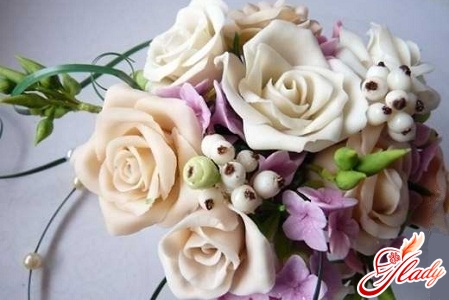
Tools for working with cold porcelain
Of course, with sculptural modeling, the main workerthe tool is the hands, or rather the fingers. But besides skilled hands it is desirable to have auxiliary devices. For the manufacture of products from cold porcelain will need:
- a set of stacks (special sticks) with different tips: sharp, jagged, with a ball on the end;
- a small rolling pin for rolling the mass;
- molds for cutting figurines;
- Acrylic adhesive (PVA glue) for gluing of individual parts;
- toothpicks;
- wire;
- scissors;
- varnish for coatings of finished products.
All these tools can be purchased in storesgoods for creativity. If desired, and a certain amount of ingenuity, special tools can be replaced with improvised tools. For example, a rolling pin can be replaced with a small glass bottle or bubble (for very small parts), a stack with a bead at the end - a needle with a bead, and as molds, use biscuit molds or molds cut from plastic bottles. And in conclusion, several recipes.
Recipes of cold porcelain
- The simplest recipe: mix in equal proportions (for example, a quarter of a cup) baking soda, starch and water.
- Improved recipe: half a cup (volume of utensils 350 ml) of starch, the same amount of PVA glue, two dessert spoons of glycerin, children's hygienic oil, one dessert spoon of lemon juice, 3 drops of formalin.
- French recipe: one glass of starch and glue, half a cup of water, one and a half teaspoon of glycerin, as much as a fat cream (with lanolin), ten drops of formalin.
- Cold recipe (no need to brew): one glass of starch, one teaspoon of dry chalk, two PVA on a vinyl base, six teaspoons of liquid petrolatum, six drops of formalin.
Products from cold porcelain are obtainedunusually elegant, and the process of sculpting is a lot of fun not only for adults but also for children. Therefore, those who, as a child, liked to sculpt from plasticine and did not lose this ability with age, it is necessary to "tame" cold porcelain. This is a great opportunity to plunge into the world of beauty and feel like a real sculptor. We advise you to read:




